Every time we sink our teeth into a square of chocolate, we should spare a thought for the unappreciated and tiny cocoa midges that pollinate the cacao flowers, from which we get cocoa beans, the raw material for chocolate. The midges do all the initial hard work and without them, we’d be facing the prospect of a world without chocolate.
Until now, however, little was known about how the midges find the flowers on the cocoa plants. As NRI’s Dr Sarah Arnold points out, although cacao produces lots of 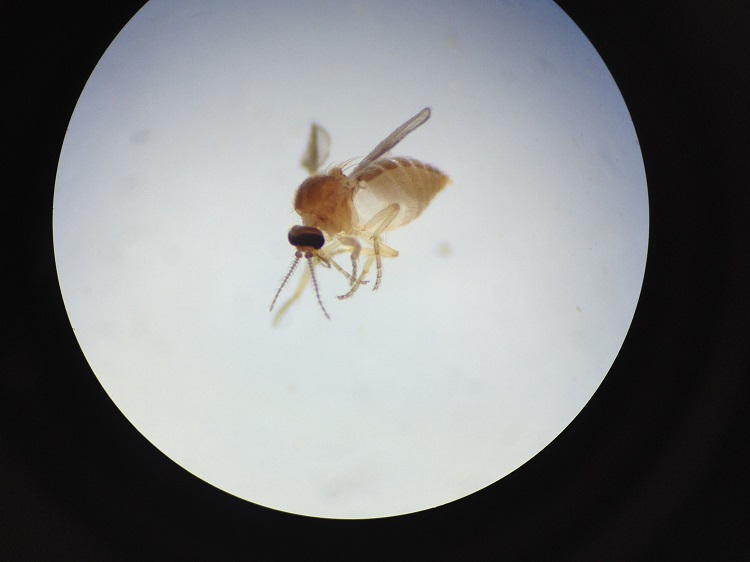 flowers, only about 5% of them are actually pollinated and as a result, cocoa yields all over the world are really low: “there are very few countries producing cocoa yields on a per area basis that are in any way near the maximum potential that the trees can sustain.”
flowers, only about 5% of them are actually pollinated and as a result, cocoa yields all over the world are really low: “there are very few countries producing cocoa yields on a per area basis that are in any way near the maximum potential that the trees can sustain.”
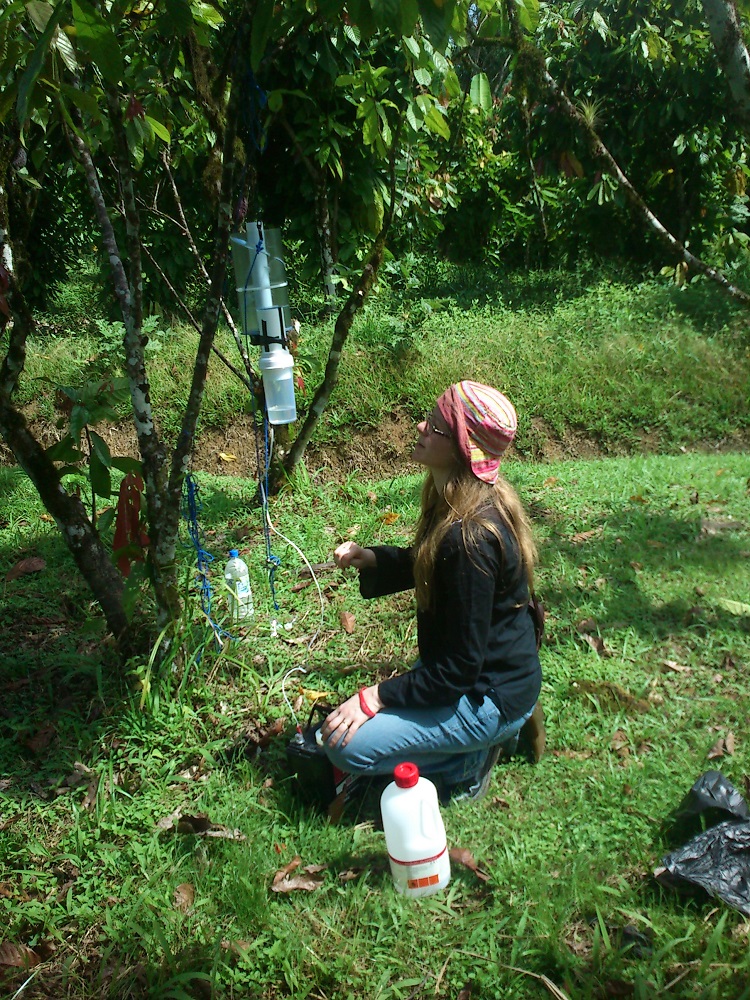 Dr Arnold travelled to the sunny cacao plantations of Trinidad and Jamaica to find out more about the midges – and in the process sampled some pretty good chocolate too. The project, known as ‘CocoaPOP’ – Cocoa Pollination for Optimised Production – was led by Professor Phil Stevenson, with Steve Belmain, David Hall, Dudley Farman, and Dan Bray, joining Sarah on the NRI team.
Dr Arnold travelled to the sunny cacao plantations of Trinidad and Jamaica to find out more about the midges – and in the process sampled some pretty good chocolate too. The project, known as ‘CocoaPOP’ – Cocoa Pollination for Optimised Production – was led by Professor Phil Stevenson, with Steve Belmain, David Hall, Dudley Farman, and Dan Bray, joining Sarah on the NRI team.
Dr Arnold is working on the principle that the more we can find out about the midges’ behaviour, the more the farmers can then do to boost their cocoa yields which means a better income for them, and ultimately more chocolate for us, the consumers. The team needed to understand how to make the midges pollinate the cacao flowers more effectively, so they had to first understand how the midges found the flowers and whether all of the selective breeding that’s been applied to cacao has somehow made the flowers less attractive and harder to find.
Dr Arnold says, “we extracted odours from the flowers of living cacao trees in Jamaica and Trinidad. With the expertise of Profs Phil Stevenson and David Hall, we then used these odour samples to build a more complete picture of the scent of the flowers than had ever previously been possible.” With this new information, the team attempted to replicate the bouquet in the lab, to find out how the midges reacted to this odour.
The biggest breakthrough was successfully breeding the midges in the NRI lab, and breeding specific species over multiple generations, the first time this had been done anywhere in the world. This opened up the possibility of being able to do future controlled experiments as Dr Arnold explains: “It’s one thing going to a farm, catching some midges and doing a few experiments in the couple of days before they die, but if you’ve got your own lab culture then that means you’ve got a reliable supply of midges going into the future.”
“You can look at the effect of the environment, at their behaviour, how they mate, how they respond to smells and different colours, where they choose to lay their eggs and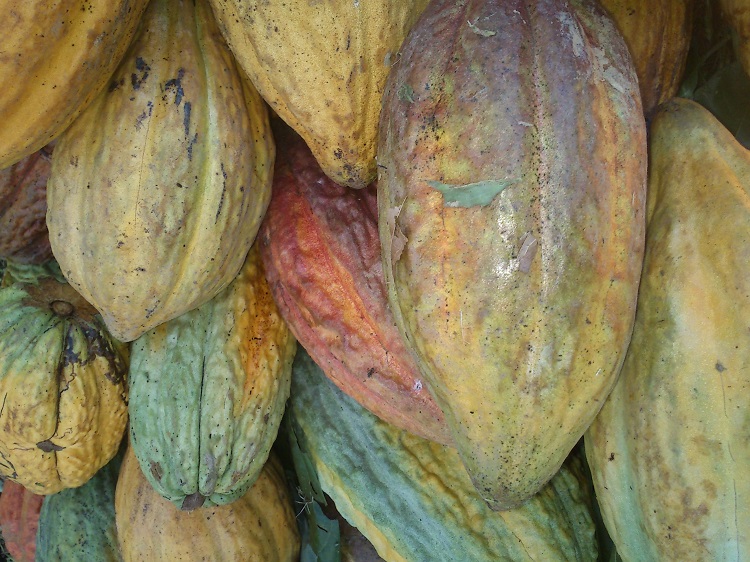 that’s what opens up all the possibilities for us as scientists. We managed to breed one species of midge – though this was probably not the most effective species of cacao pollinator – so there’s still a lot of research to do.”
that’s what opens up all the possibilities for us as scientists. We managed to breed one species of midge – though this was probably not the most effective species of cacao pollinator – so there’s still a lot of research to do.”
“Understanding how pollinators find and choose flowers can help us breed crops with more attractive flowers, and design ways to conserve them better. Now we know we can breed midges from cacao farms in the lab, there are so many more questions we can ask and hopefully improve production of cocoa.”
Dr Arnold and the team developed good working relationships with the Caribbean cocoa farmers who collaborated on the project. She says one experience in Trinidad where 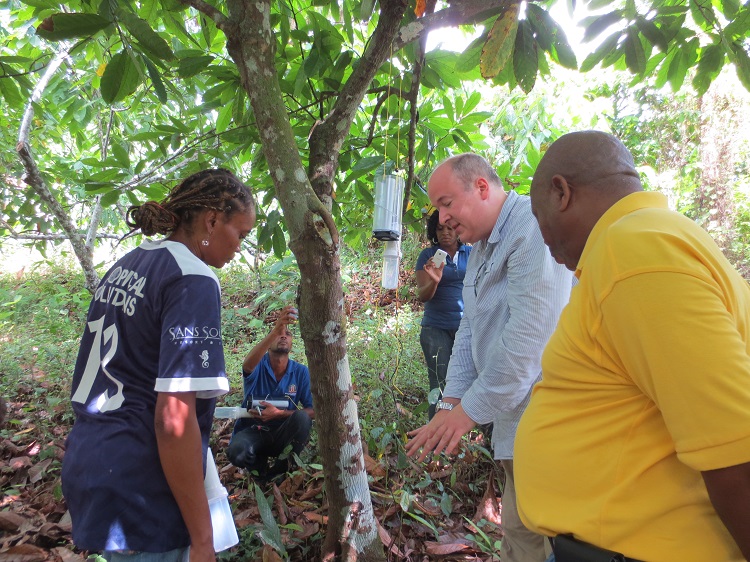 she got to taste single-origin chocolate will stay with her forever: “definitely one of the non-scientific highlights for me was standing with a farmer called Jude on his plantation, while he snapped off pieces of chocolate from a bar that had been made from cocoa grown right there, processed by him and some of the farmers in the area and made into this absolutely beautiful product.”
she got to taste single-origin chocolate will stay with her forever: “definitely one of the non-scientific highlights for me was standing with a farmer called Jude on his plantation, while he snapped off pieces of chocolate from a bar that had been made from cocoa grown right there, processed by him and some of the farmers in the area and made into this absolutely beautiful product.”
Dr Arnold describes the quality of that chocolate as, “perfect, with flavours that were rich and fruity and complex. Once you’ve eaten something like that”, she says, “then you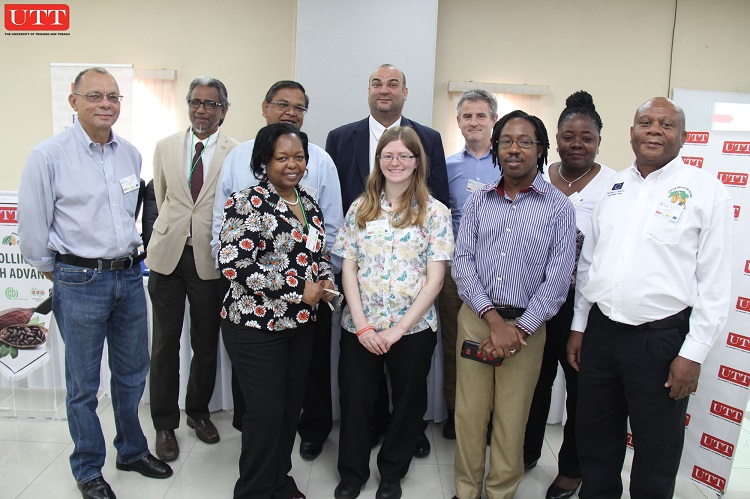 know what good chocolate tastes like.”
know what good chocolate tastes like.”
“Trinidadian chocolate has a really distinctive taste – even when it’s a really high cocoa content it’s not bitter. It has fruity notes and richness, it’s a little bit spicy underneath and the flavour kind of explodes inside and across your mouth. If you buy a cheap chocolate, the flavour is like listening to someone playing an instrument proficiently, but all on one note. Trinidadian chocolate is like the whole orchestra, playing perfectly in tune and hitting all the right notes at exactly the right time. Imagine that happening in your mouth!”
Producing good chocolate is an art form, with many factors to consider and it requires a lot of skill. Dr Arnold learnt that processing subtleties that work for one variety of cocoa beans, might not necessarily work for others.
Dr Arnold says her hope for the future is that chocolate-lovers will become more aware of the fact that there are these little midges working away in the background and that we all need to become stewards of their environment and put pressure in the long term on the chocolate companies: “I’d like to ask the big producers what they are doing to maintain the pollinator health and diversity on the cacao plantations. I’d love to move to a future where pollinator conservation on cacao plantations explicitly became part of the certification schemes, and something that companies look actively into preserving. Some of them are doing this already but it’s not always as high profile as I’d like to see.”
To find out more about:

